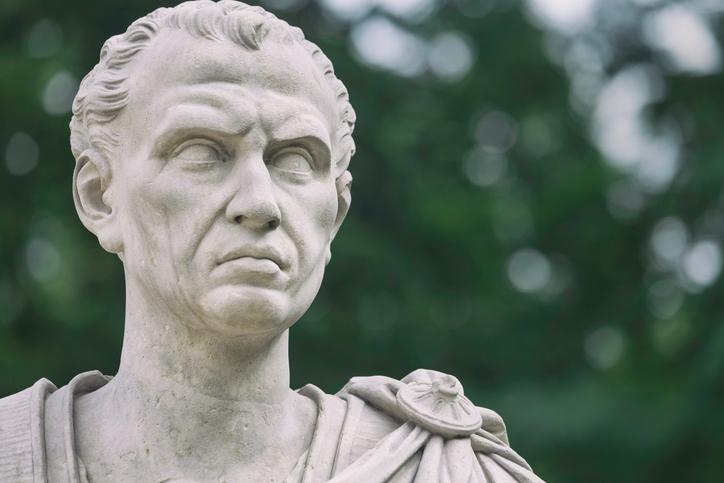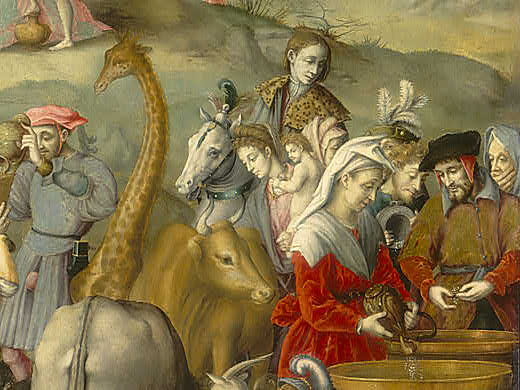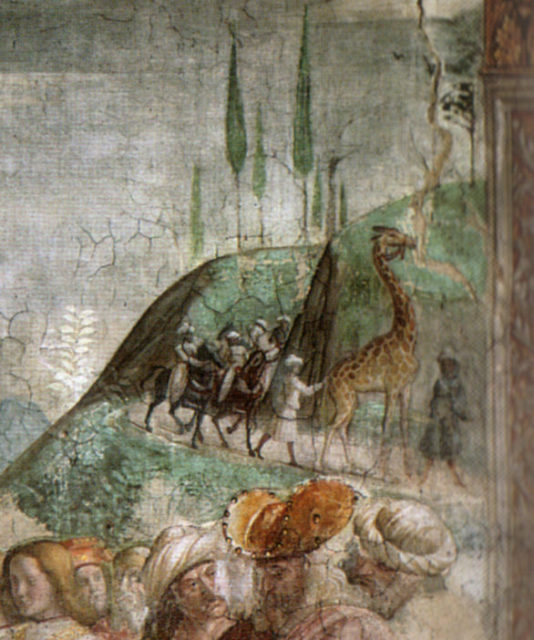It must have been a joyful return to Rome in 46 BC for Julius Caesar. Following his success in Egypt, he had, reportedly, come back with quite a sweeping, exotic menagerie, among which the main attraction was a very “strange” species. The animal had a long neck and reminded people of both camels and leopards. It was the giraffe— probably the first one introduced among Europeans.
The Romans were seemingly confused by the giraffe after their first encounter with it. They did not have a lot of ideas of how they were supposed to treat this creature, and as it embodied characteristics of both camel and leopard, they decided to name it “cameleopard.”
Cassius Dio, originally from Greece but serving as both a statesman and historian in Rome, explained the name of the animal in his book, Roman History. He noted, “This animal is like a camel in all respects except that its legs are not all of the same length, the hind legs being the shorter.” He then continued, “Its skin is spotted like a leopard, and for this reason it bears the joint name of both animals.”

Several more amusing descriptions of the giraffe can be spotted here and there across other historical texts from the ancient Roman days. Pliny would have it described as a “wild sheep” while Helidorus would note that this animal could be easily escorted by a rope around its neck. Others had further dubbed the giraffe to be an “Indian camel” or, in the words of Gibbon, this was “the tallest, the most gentle, and the most useless of the large quadrupeds.”
Of course, in this episode of history, there was more to the giraffe than just being “useless.” Some sources mention that the exotic species had been a present from Cleopatra, the last among the great Egyptian pharaohs. She supposedly followed Caesar, her lover, to Rome. As the Great Roman Civil War had concluded by this point, his return voyage to Rome had been followed by a succession of celebration events. In one of them, Caesar would exhibit his giraffe at a public event at the famous Circus Games.
In other instances, newly brought animals would have quickly ended up torn apart as a sort of public spectacle during the Games. Making helpless animals perish was just another case of Roman emperors demonstrating their power. They did it frequently, but this did not necessarily happen with Cleopatra’s gift.

The Romans still stuck to one other tradition: When they brought new animals into the capital, they only presented them in the Circus, and these presentations were hosted when no blood-shedding shows were scheduled for the day (like fights among gladiators and animals).
Giraffes existed in Rome long after 46 BC, in any case. Public killings of these innocent animals did occur, but long after the days of Caesar. One such event took place under Commodus during the latter part of the second century AD. This emperor had commissioned a public spectacle where a dozen exotic animals were slaughtered in the arena. Besides giraffes, some rhinoceroses, hippopotamuses, and elephants were publicly killed during the show.
Perhaps the last big event where giraffes were included was recorded under Philip the Arab, the Roman emperor who was born in the province of Arabia and held power for only five years. He would not slaughter the giraffes but would have them featured in a public event that celebrated a significant milestone in the history of Rome: one millennium since its founding. The big festivity was held around 248 AD. Besides giraffes, a wide spectrum of animals was also included, tigers and elephants among them.

As the Roman Empire started to crumble, its number of giraffes shrank, and very soon, they became, once again, the “unseen” species on the old continent. That was, at least until the Middle Ages, when Lorenzo de’ Medici, the famous ruler of the wealthy and prolific Florentine Republic, followed in the footsteps of Caesar and brought a giraffe to the city.
Also in Medici’s case, the giraffe was again presented as a gift, possibly by al-Ashraf Qaitbay, the Burji Sultan of Egypt. The animal had caused a stir and was a real attraction upon its introduction to the people of Florence. That was likely the first giraffe to be seen in Italy since the days of Ancient Rome.
Nevertheless, the animal did not survive after this for a long enough period, and another giraffe was not seen in Europe for perhaps three more centuries.
